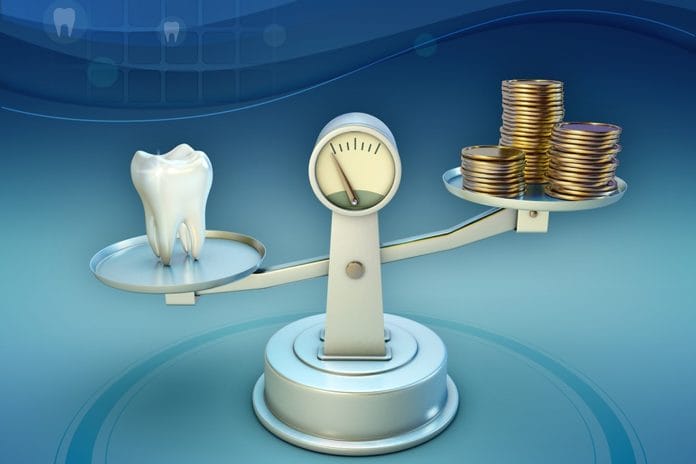I have been a practicing Registered Dental Hygienist since 1987. I cannot believe the math, but yes, 31 years! I have witnessed a lot of change over those decades. From optional ultrasonic usage for the extreme calculus “difficult prophy” cases versus daily ultrasonic/piezo usage as a standard of care, fluoride trays instead of fluoride varnish application, monster-sized clinical chairs with rollers that ran so rough they felt like my lower back dislocated with every change of position versus ergonomic saddle chairs, latex versus nitrile gloves, and so much more. Dental hygienists were not anesthesia or nitrous oxide certified, which meant long waits for the dentist to anesthetize patients. Clinical exams were formal with “yes sir or no sir” responses to the doctor versus co-diagnosis (most of the dentists were male back then), film radiographs versus digital radiographs, no intra-oral camera usage, regular safety glasses versus loupes, carpal tunnel surgery versus ergonomic stretches, basically, working harder, not smarter. How can I forget all of that “free” periodontal treatment that was given away during prophies?
The one thing, however that has not changed in the dental industry through the decades is the amount of dental coverage insurance companies allow per year. The difference being that instead of treating several crowns with $1,000-$2,000 of insurance benefit coverage, today’s insurance barely covers one crown per year. How can we possibly help patients who present with multiple dental issues and require quadrant treatment? As hygienists, we are constantly barraged to upsell dental services both as a favor to the patient (less visits=less time off work for the patient) and for the office’s net profit.
I used to feel guilty “upselling,” but now realize I am actually doing the patient AND the office a favor. It becomes a win-win scenario. Diagnosing and treatment planning two crowns, if needed, per visit can triple the net income for that appointment by optimizing the dentist’s chair-time, which reduces operational costs.1 How then, are we to upsell that treatment when insurance has such limited coverage? The answer is simple. Be honest with patients and treat them as you would your family. Inform, explain, and show your patient all that is going on in their mouth, and all that may soon happen if preventive/restorative treatment is not addressed soon. Show before and after images of cracked teeth left untreated.
This is where intra-oral imagery is beneficial. Take time to copy images of patients’ dental condition and send the images home with them in a nice folder. This simple act shows depth and concern for their oral health. Most patients will review those images when they get home, or their spouse will look through the images as well, turning concern into action. The patient ultimately still has control of his/her dental treatment but is also given control of his/her dental treatment timeline. Remember, dental treatment is not normally considered a life-or-death decision but more of elective treatment.
Presenting several payment options to patients, in addition to their insurance is another win-win scenario for both patient and practitioner. Consider the fact that prepping multiple teeth for crowns in one appointment versus two separate appointments may save that patient two dental visits. Many people are hard-pressed to get time off work or are reprimanded if they leave work early for personal leave. By upselling, or presenting several phases of treatment during the exam, you are actually doing both yourself and your patients a great favor.
Once again, consider that patient who needs more than one quadrant of restorative work, and is only presented phase treatment according to what their yearly insurance may cover. Do you think that patient will be happy when he/she visits your office with a toothache from a cracked tooth that decided to find its way to the nerve? Now the only options are endodontic treatment in addition to a crown, or an extraction which involves the consideration of implant or bridge to replace the missing tooth. Instead of doing the patient a favor by presenting only what their insurance will cover, they are now faced with a financial and dental dilemma. This also puts the office at risk of the possibility of a lawsuit.
Upselling may sound harsh, but it is really more about “upcaring” and “uptreating” to protect your patients from future unnecessary dental doom, loss of work, and multiple trips to the office. Most patients have some level of anxiety when it comes to visiting the dental office, so lessening their visits also lessens their dental anxiety. It also protects your good name, your integrity as a caring dental professional, and contributes to the “upkeep” and bottom-line which enables growth and stability for your dental practice.
SEE ALSO: 5 Things to Consider Before Recommending a Toothbrush to Patients
DON’T MISS: Corporate Dentistry: How to Maintain Autonomy in a Corporate World
Reference
- Dr. Blatchford B, DDS. Dental Practice KPIs – Part IV: Daily Goals. ADA Center for Professional Success. Lecture 31. 2018 ADA CERP











